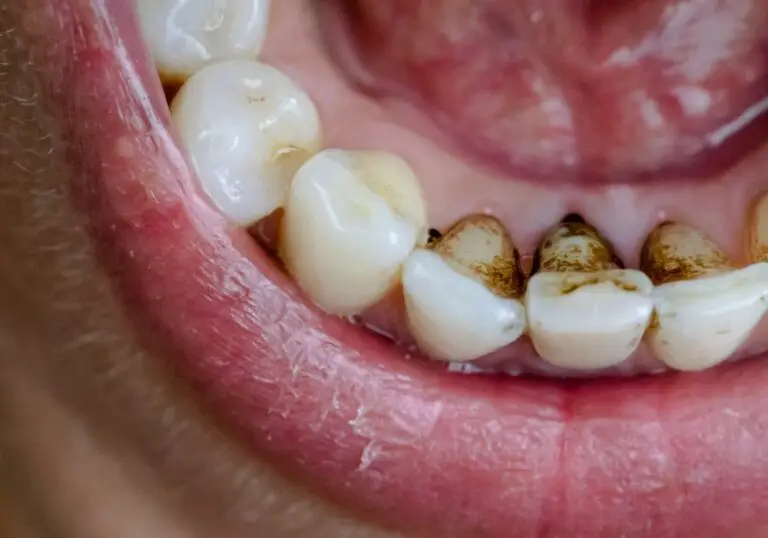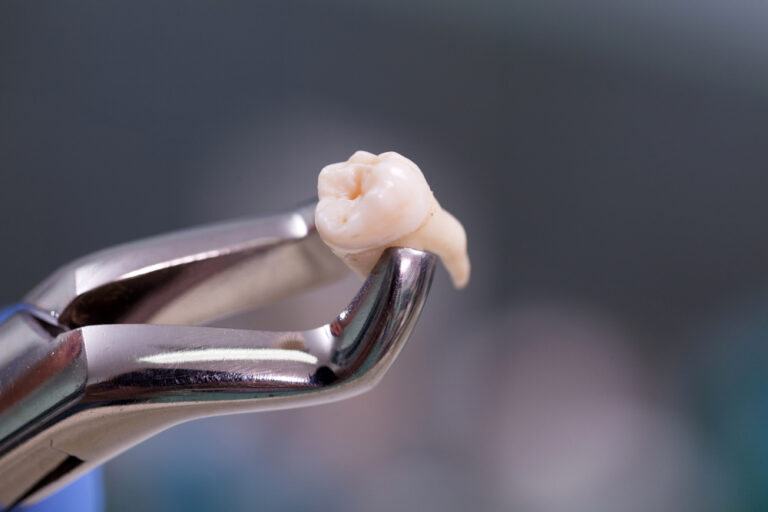Wisdom teeth pain is a common problem that can arise as these final molars erupt in the back of your mouth. Wisdom teeth typically emerge between the ages of 17 and 25, which is later than your other teeth. This late development means they may not have enough room to properly come in, leading to a variety of issues that can be painful. Understanding why your wisdom teeth may hurt and getting dental treatment can bring relief.
The Anatomy of Wisdom Teeth
Wisdom teeth, also known as third molars, are located at the very back of the mouth – one in each of the four quadrants. Most people have four wisdom teeth, though it’s possible to have fewer. Their late arrival is why they are called “wisdom” teeth, as they generally erupt once a person is older and wiser!
These teeth have the same basic structures as all teeth. The visible crown emerges from the gums, and below are one or more roots covered in cementum that anchor the tooth into the alveolar bone of the jaw. Other key components include:
- Enamel – The outer layer of the crown made of hardened calcium and phosphate minerals. It is the hardest substance in the body.
- Dentin – Softer bonelike tissue under the enamel that forms the bulk of the tooth before the pulp cavity.
- Pulp – The innermost layer filled with nerves and blood vessels.
- Cementum – Bone-like tissue covering the tooth roots.
| Tooth Structure | Description |
|---|---|
| Enamel | Hardest, outermost layer made of calcium |
| Dentin | Bony tissue under enamel that forms main body |
| Pulp | Soft tissue with blood vessels and nerves |
| Cementum | Bonelike tissue covering tooth roots |
</div>
The crowns of wisdom teeth can be distinctly different than other molars. They tend to be smaller and have more irregularities such as extra cusps and grooves. The roots are also more variable – wisdom teeth often have multiple curved roots branching off the main root. This complex anatomy contributes to many of the issues associated with wisdom teeth.
What Causes Wisdom Tooth Pain?
There are several potential sources of wisdom tooth pain:
1. Pericoronitis
Pericoronitis refers to inflammation and infection of the soft tissues surrounding a partially erupted wisdom tooth. It happens when the gum flap overlying the incoming wisdom tooth partly covers and traps food debris and bacteria underneath it. This causes redness, swelling, and infection in the gum tissue around the crown.
2. Impacted Wisdom Teeth
When wisdom teeth are obstructed and unable to fully emerge through the gums, this is called impaction. Impacted wisdom teeth result from lack of sufficient space in the jaw, blockage by other teeth, or unusual positioning. Impaction commonly leads to pain, inflammation, and infection of surrounding tissues.
3. Dental Caries
Tooth decay (also called dental caries or cavities) can develop in wisdom teeth as it does in any tooth. Bacteria feed on sugars and release acid that erodes tooth enamel. This decay process can eventually reach the soft inner pulp if left untreated, causing severe tooth pain.
4. Periodontal Disease
Gum disease results from poor dental hygiene that allows plaque and tartar buildup. Periodontal disease around erupting or impacted wisdom teeth leads to bacterial infection and inflammation of gum tissues, causing them to become painfully swollen and tender.
5. Cystic Changes
Fluid-filled cysts sometimes form from remnants of wisdom tooth follicle tissue during development. Expanding cysts around wisdom tooth roots can compress nerves and result in pain.
6. Bruxism
Clenching, grinding, or abnormal chewing forces from bruxism can stress erupting wisdom teeth. This can irritate and inflame the surrounding ligaments and lead to tooth damage.
Signs Your Wisdom Tooth Hurts

Some common signs and symptoms that may indicate your wisdom tooth is causing pain:
- Throbbing, aching, or sharp pain in the back of the mouth around the wisdom tooth
- Swollen, red, or inflamed gums around the area
- Sensitivity to hot or cold temperatures
- Difficulty opening the mouth or chewing
- Pain that radiates to the ear, jaw joint, or side of the neck
- Headache or jaw stiffness
- Bad breath or unpleasant/metallic taste in mouth
- Visible cavities or tooth decay
- Pus discharge or abscess seen as a pimple-like lesion on the gums
Any symptoms of infection like fever, chills, or fatigue along with wisdom tooth pain warrants prompt dental evaluation.
Risk Factors for Wisdom Tooth Pain
Certain factors raise your chances of having painful wisdom tooth complications:
- Poor dental hygiene – Inadequate brushing and flossing allows decay and gum disease.
- Smoking – Impairs healing ability and promotes infections.
- Insufficient space in jaw – Results in impaction and crowding issues with other teeth.
- Pre-existing gum disease or dental problems – Can spread to wisdom teeth.
- Hormonal changes – Can increase gum inflammation during puberty or menstruation.
- Older age – Wisdom tooth roots more formed so extractions more difficult.
- Anomalous wisdom tooth position – Increases impaction risk if oddly angled.
Options for Wisdom Tooth Pain Relief
If you have wisdom tooth pain, consider these measures to help relieve symptoms:
- Over-the-counter pain medication like acetaminophen, ibuprofen, or naproxen can alleviate pain and inflammation.
- Topical numbing gel applied directly to the sore gum tissues may temporarily reduce pain.
- Salt water rinses can soothe mildly inflamed gums in pericoronitis.
- Improved oral hygiene with brushing, flossing, and mouthwash prevents infection.
- Antibiotics prescribed by a dentist combat bacteria causing infections leading to wisdom tooth pain.
- Extraction surgically removes the wisdom tooth and is often necessary if pain persists.
- Root canal fixes inner pulp nerve damage in restorable wisdom teeth.
- Apicoectomy removes just the root tip of the tooth while keeping the crown intact.
Seeing a dentist is essential to determine the exact cause of any wisdom tooth pain and get appropriate, timely treatment. Left untreated, infections from wisdom teeth can worsen and spread through the jaw or other parts of the body.
When to See Your Dentist for Wisdom Tooth Pain?

You should consult your dentist promptly if you have:
- Unbearable or persistent wisdom tooth pain
- Pus discharge around the tooth
- Swollen lymph nodes under your jaw or neck
- Difficulty swallowing or opening your mouth
- Fever, chills, fatigue or other signs of infection
- Damage to nearby teeth, existing fillings, or dental work
Seek emergency dental care if you have a bad infection, as antibiotics or urgent extraction may be required. For recurrent bouts of pain, inflammation, or other chronic wisdom tooth problems, extraction is often the best solution.
Wisdom Tooth Extraction Recovery Process
The recovery timeline after wisdom tooth extraction surgery is generally:
- First 3 days – Most swelling, pain, and discomfort during this initial period.
- 1 week – Transition to a soft food diet and limit strenuous activity.
- 2 weeks – Gradual decrease in swelling, stiffness, and soreness.
- 1 month – Gums fully healed, can resume normal activities.
Proper post-op care after extractions facilitates healing and prevents complications like dry socket:
- Use ice packs on the face to minimize swelling.
- Take prescribed pain medications as directed.
- Gently rinse mouth with warm salt water solution.
- Eat soft, lukewarm foods for the first days like yogurt, soup, applesauce.
- Avoid spitting, drinking with a straw, smoking, or other mouth disturbances.
- Sleep propped up on pillows to reduce throbbing.
- Monitor for worrisome signs of infection like fever or chills.
With diligent at-home care after surgery, you can ensure the smoothest possible recovery from wisdom tooth removal.
Risks and Complications of Wisdom Tooth Extractions

Though generally safe and effective, wisdom tooth extraction carries some risks:
- Dry socket – Lost blood clot after surgery causes severe pain. More common with smoking.
- Nerve injury – Lingering numbness or odd sensations in the lip, tongue or chin.
- Infection – Requires prompt antibiotics and drainage if occurs.
- Bleeding – Usually controlled by biting on gauze after surgery.
- Sinus issues – If upper wisdom tooth roots are near the maxillary sinuses.
- Jaw fracture – Very rare from excessive force on removal.
Major complications are uncommon, especially when extraction is performed properly by an experienced oral surgeon. But the risks do emphasize the importance of wisdom tooth removal at the right time and by the right dentist.
Frequently Asked Questions About Wisdom Teeth Pain
How long does wisdom tooth pain last after extraction?
Pain from wisdom tooth extraction is worst during the first 3 days, then gradually improves over 1-2 weeks. Using ice, taking prescribed medication, and eating soft foods can help manage normal post-op pain. Call your dentist if the pain seems excessive.
Can wisdom teeth stay in if they are not currently painful?
Partially impacted wisdom teeth that are not causing pain now should still often be extracted to prevent future problems. But wisdom teeth that are fully erupted and cavity-free may not necessarily require immediate removal. Have your dentist monitor them at checkups.
What are signs your wisdom tooth is infected?
Signs of an infected wisdom tooth include constant throbbing pain, swollen gums, bad breath or taste, fever, fatigue, and pus discharge around the tooth. See a dentist right away for antibiotics and extraction if you suspect infection.
Is it safe to have wisdom teeth removed during pregnancy?
Elective wisdom tooth extraction is best performed prior to pregnancy. If problematic during pregnancy, removal may still be recommended after the first trimester since uncontrolled infections pose a greater risk. Discuss the risks and benefits with your dentist.
How much does wisdom tooth extraction cost with insurance?
The cost for wisdom tooth removal ranges from $75 – $200 per tooth with insurance, depending on surgical difficulty, type of anesthesia, and your plan’s dentist coverage. More complex extractions cost more. Without insurance, expect to pay $150 – $400 per tooth.
When to Take Wisdom Tooth Pain Seriously
Severe or persistent wisdom tooth pain should not be ignored. Make sure to see a dentist promptly to have your symptoms properly evaluated and determine next steps. Leaving ongoing pain unchecked allows infections to worsen and spread. With the right treatment plan, you can find relief from problematic wisdom teeth.







